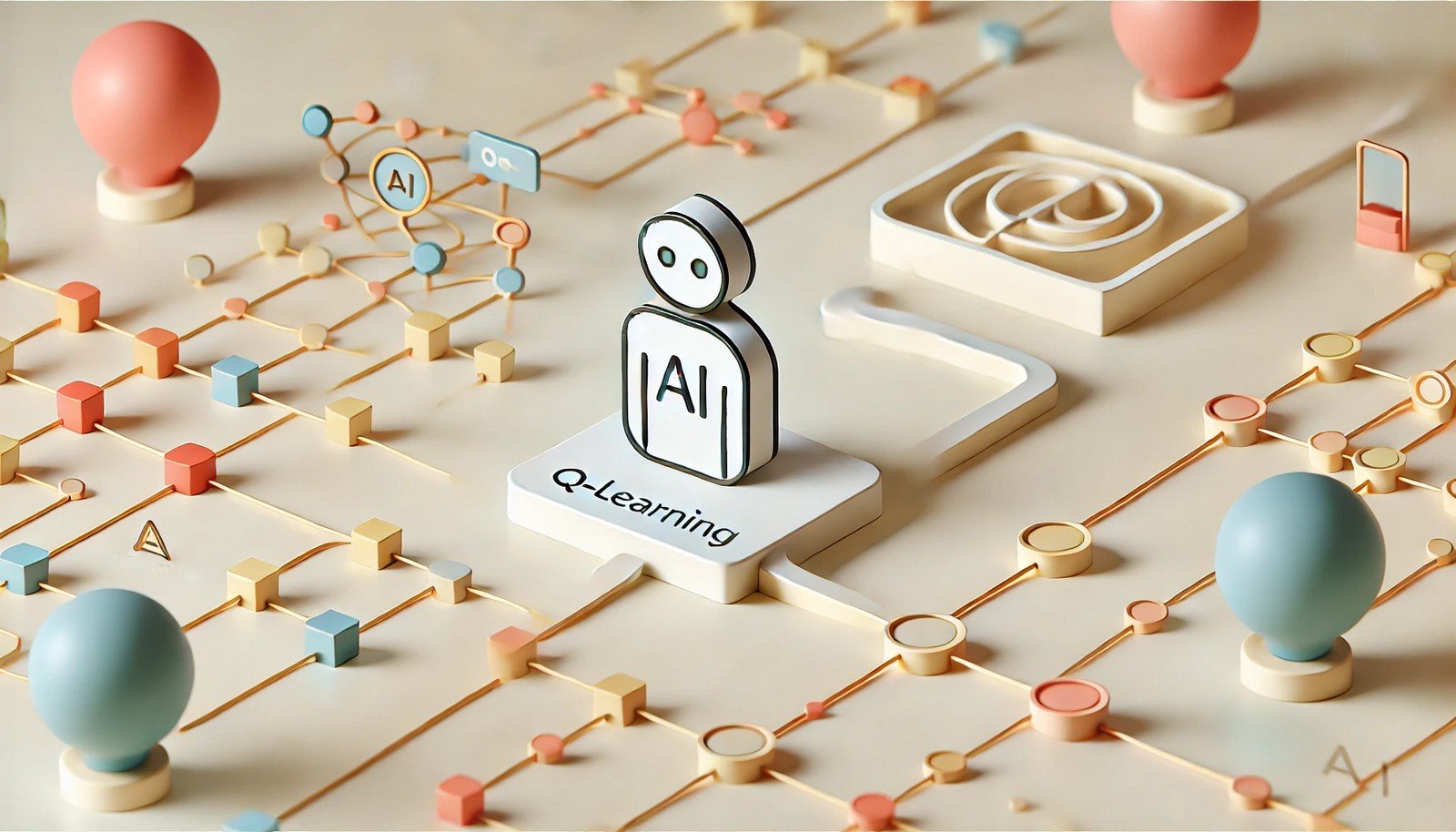Q-learning

Quick Navigation:
- Q-learning Definition
- Q-learning Explained Easy
- Q-learning Origin
- Q-learning Etymology
- Q-learning Usage Trends
- Q-learning Usage
- Q-learning Examples in Context
- Q-learning FAQ
- Q-learning Related Words
Q-learning Definition
Q-learning is a reinforcement learning algorithm in which an agent learns to make decisions by exploring its environment, observing rewards, and optimizing actions to maximize long-term rewards. By repeatedly interacting with the environment, the agent updates a Q-table that stores the estimated utility (Q-values) of different actions in specific states. The Q-learning process continues until the agent learns the optimal policy, allowing it to make the best decisions autonomously. This approach is particularly useful for sequential decision-making problems where actions influence future rewards.
Q-learning Explained Easy
Imagine you’re playing a video game where you get points for picking up treasures and avoiding obstacles. Q-learning is like a smart helper that remembers which moves got you the most points in the game. Each time you take a turn, this helper learns whether that move was good or bad, helping you decide on the best moves to get the highest score over time.
Q-learning Origin
The Q-learning algorithm was introduced by Christopher Watkins in 1989 as a reinforcement learning method. Since then, it has become foundational in machine learning for its effectiveness in dynamic environments where agents learn by trial and error.
Q-learning Etymology
The term “Q-learning” stems from the use of Q-values (quality values), which represent the expected utility of actions taken in specific states to maximize rewards over time.
Q-learning Usage Trends
Q-learning has seen widespread use in recent years, especially in fields like robotics, gaming, and autonomous vehicles. Its popularity is due to its flexibility and ability to handle complex, changing environments where pre-programming each action is infeasible. It is a fundamental part of reinforcement learning, contributing to advances in AI that adapt and learn autonomously.
Q-learning Usage
- Formal/Technical Tagging:
- Reinforcement Learning
- Machine Learning
- Decision-Making Algorithms - Typical Collocations:
- "Q-learning algorithm"
- "Q-value table"
- "Q-learning policy"
- "action-reward sequence"
Q-learning Examples in Context
- In robotics, a Q-learning algorithm can help a robot learn how to navigate a maze by rewarding successful exits.
- Video game AI uses Q-learning to allow in-game characters to make strategic decisions by learning from player actions.
- Q-learning assists in financial modeling by enabling systems to make predictive decisions based on past rewards and penalties.
Q-learning FAQ
- What is Q-learning?
Q-learning is a reinforcement learning algorithm that helps agents learn optimal actions by maximizing long-term rewards. - How does Q-learning work?
Q-learning works by creating a Q-table that stores Q-values for different state-action pairs, which the agent updates as it interacts with the environment. - What is a Q-value?
A Q-value represents the expected reward of taking a specific action in a particular state. - Where is Q-learning used?
Q-learning is commonly used in robotics, video game AI, autonomous driving, and complex decision-making tasks. - Why is Q-learning popular in AI?
Q-learning's adaptability to changing environments and its ability to learn optimal policies make it ideal for various AI applications. - What is the difference between Q-learning and deep Q-learning?
Q-learning uses a Q-table, while deep Q-learning uses neural networks to approximate Q-values in complex, high-dimensional spaces. - Can Q-learning be used for real-time applications?
Yes, with optimization, Q-learning algorithms can handle real-time decision-making in dynamic environments. - What are the limitations of Q-learning?
Q-learning can struggle in environments with large state spaces and may require extensive training time to converge on an optimal policy. - Is Q-learning suitable for continuous action spaces?
Traditional Q-learning works best in discrete action spaces, but adaptations like deep Q-learning can handle continuous actions. - How is Q-learning implemented in Python?
Libraries like OpenAI's Gym and TensorFlow offer tools to implement Q-learning algorithms in Python for various applications.
Q-learning Related Words
- Categories/Topics:
- Reinforcement Learning
- Machine Learning
- AI Decision-Making
Did you know?
Q-learning was originally designed for gridworld-type problems but has evolved significantly. Today, Q-learning forms the basis of more complex AI, enabling robots to solve real-world tasks such as navigating unknown environments and optimizing energy use in smart buildings.
PicDictionary.com is an online dictionary in pictures. If you have questions or suggestions, please reach out to us on WhatsApp or Twitter.Authors | Arjun Vishnu | @ArjunAndVishnu

I am Vishnu. I like AI, Linux, Single Board Computers, and Cloud Computing. I create the web & video content, and I also write for popular websites.
My younger brother, Arjun handles image & video editing. Together, we run a YouTube Channel that's focused on reviewing gadgets and explaining technology.



Comments powered by CComment